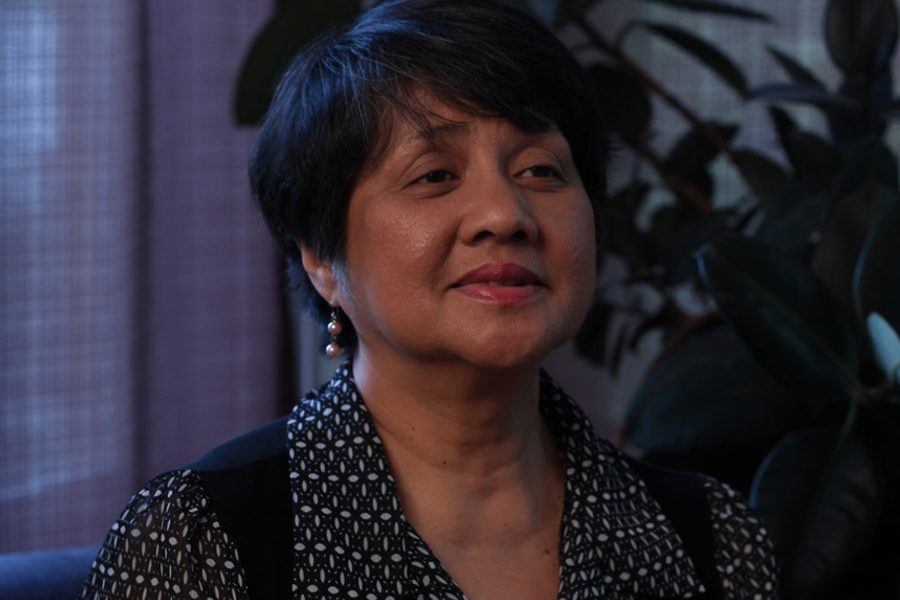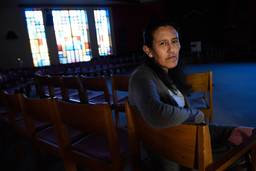
Sometimes the sexual harassment was just a comment. At other times, it was physical assault. But in many ways, the worst part of the workplace sexual violence Myrla Baldonado experienced while employed as a domestic worker for more than five years was feeling powerless. “It happens all the time, and it should not be an invisible issue,” said Baldonado, now an organizer with the Chicago-based Latino Union worker center.
Now Baldonado is helping to create a new paradigm for dealing with workplace sexual violence. The Coalition Against Workplace Sexual Violence formed more than a year ago when victim advocates and labor organizers in Chicago joined forces, along with some attorneys, to develop an organizing guide for fighting sexual assault in the workplace.
After a year of formulating the new organizing curriculum the result was “Ending Workplace Sexual Violence: A Know Your Rights Curriculum and Guide for Community Educators.” Organizers held the first training session using the curriculum in October, bringing together several worker centers and local unions.
Members of the coalition say that the cross-movement collaboration has strengthened the fight against workplace sexual violence by filling in the gaps in knowledge of both victim advocates and labor organizers.
With sexual violence already one of the most underreported and under-prosecuted crimes, assault in the workplace, especially in low-wage or poorly regulated industries — such as the domestic work that left Baldonado with few legal recourses — continues to slip under the radar, says Sheerine Alemzadeh, an attorney with the Chicago Alliance Against Sexual Exploitation (CAASE), and a founding member of the coalition.
The Bureau of Justice Statistics’ Workplace Violence report, released in March 2011, found that rape and sexual assault were the least likely of any workplace crime to be reported, with victims of such assaults going to the police in only 39.4 percent of such incidents that occurred in the workplace between 2005 and 2009.
The low incidence of reporting makes it difficult to find credible figures, but the report noted that of all the nonfatal violence experienced in the workplace between 2005 and 2009, about 2.3 percent was rape or sexual assault.
The legal system places a higher burden of proof on workplace sexual assault than on crimes such as wage theft, making it doubly difficult to prosecute, says Karla Altmayer, a member of the coalition and attorney with the non-profit Legal Assistance Foundation, who works with farmworker women.
“When a person who is a victim of wage theft comes forward, it’s simple to deal with. You find out how many hours, you file a complaint,” she said. “But when it comes to workplace sexual violence, it becomes a matter of ‘he said, she said’ in the eyes of the employer and everyone else.”
The coalition began meeting in the fall of 2012, spurred by the realization that rape crisis centers and worker centers were holding the missing pieces of the same puzzle. While victim advocates were lacking in the workers’ rights knowledge necessary for dealing with assault at work, worker centers were unsure about how to begin organizing without practical knowledge of how to work with victims.
“I invited the rape crisis centers and worker centers to a meet and greet, but there was so much energy and passion in the room we decided to start meeting monthly,” says CAASE’s Alemzadeh. “One of the first goals we identified was greater awareness and recognition of sexual violence in the worker centers.”
The first training session in October 2013 included about 25 people from a mishmash of unions and worker centers: the Latino Union, Chicago Coalition of Household Workers, ARISE Chicago, Fight for 15, Chicago Community and Workers’ Rights and the United Food and Commercial Workers Union.
Some of the challenges of both writing and implementing the curriculum have been practical — a shoestring budget and the overwhelming nature of bringing as heavy a topic as sexual violence to the table amid organizing for a variety of other pressing issues.
Other challenges hit more directly at the differences and tensions between how rape crisis centers and worker centers function.
“You have sexual assault advocates and counselors, who are intensely focused on the recovery of individual victims and place a very high premium on confidentiality and privacy, which makes sense,” says Alemzadeh. “And then you have labor organizers, whose strategies often involve storytelling as a way of drawing public attention to ignored workplace injustices.”
The challenge was to use the tension “constructively,” she says, and to push both beyond the limits of their current models.
Anu Selvam, a senior legal advocate with Rape Victim Advocates, says that when organizing around sexual assault in the workplace, the most important thing is not necessarily to preserve privacy, but to allow an individual to have power over their own story.
“Sexual violence is so much about power and control,” she said, “and a loss of control can be detrimental to an individual’s healing process.”
For some members of worker centers, the training was useful to broaden the understanding of whose responsibility it was to fight again sexual violence. Eric Rodriguez is executive director of the Latino Union, which works primarily with domestic workers and day laborers, two professions often segregated by gender.
When the curriculum was first introduced to workers at the Latino Union, said Rodriguez, “men weren’t sure how best to support the women, and there were a lot of moments when a women in the organization had to step in and guide us.”
But, he said, “You have to recognize your moment of failure, talk about that, and commit to changing. I was really proud of the workers.”
The next step for the coalition is to hold their second training in the spring. And beyond that, to keep fighting against workplace sexual violence.
“The curriculum makes recognizing gender oppression … part of the culture in the worker center,” said Baldonado, the domestic worker-turned-organizer. “There is also oppression in that form, not just on the economic side of wages.”







